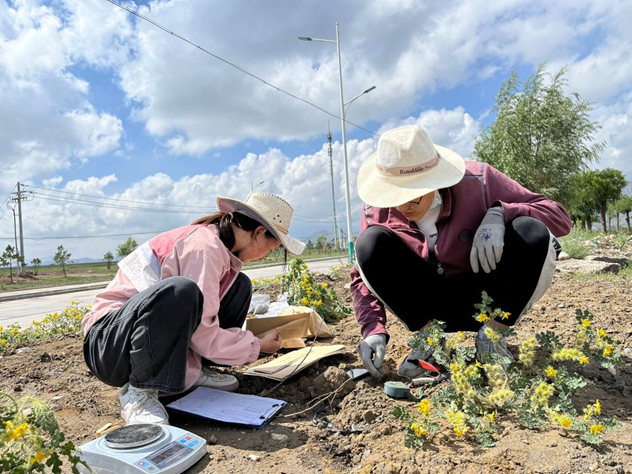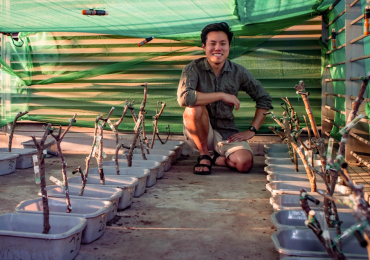In this ‘Behind the Paper’ blog post, author Kai Shi, a PhD student at Xinjiang Institute of Ecology and Geography, Chinese Academy of Sciences, delves into their article ‘Aridity and grazing are associated with reduced trait complementarity and higher invasion intensity of Solanum rostratum in native plant communities‘. Kai discusses how healthy, diverse plant communities are a natural defense against invasions and shares the unpredictable yet exciting nature of fieldwork.
About the paper
Our paper, “Aridity and grazing are associated with reduced trait complementarity and higher invasion intensity of Solanum rostratum in native plant communities” (Functional Ecology, 2025), addresses a classic yet still debated question in ecology — why are some plant communities more resistant to invasion than others?
We focused on the invasive plant Solanum rostratum, conducting a large-scale field survey across 40 sites spanning approximately 3,000 km from Jilin to Xinjiang province in northern China. At each site, we measured the community diversity, functional traits, phylogenetic structure, and invasion intensity.
Our findings revealed that the higher the diversity and functional complementarity of a community, the lower the invasion intensity of S. rostratum. However, in areas with strong aridity or heavy grazing disturbance, this “cooperative” structure within the community weakened—traits became more similar, resource use efficiency declined, and invaders found their opportunity to thrive.
This study not only supports Elton’s “Biotic Resistance Hypothesis” but also highlights that it is the structure of diversity—not just the number of species—that underpins community resistance to invasion. In other words, conserving biodiversity is not merely about preserving species richness, but about maintaining how species differ and how they function together.
More broadly, our results suggest that the combined effects of climate aridification and grazing may globally erode ecosystems’ “immune systems,” making them more susceptible to biological invasion. These findings provide important implications for ecosystem restoration and biodiversity conservation in arid and semi-arid regions.
About the research
This project began in the field. Across the northern grasslands, along roadsides, farmlands, and even desert margins, we encountered Solanum rostratum—a striking plant with golden flowers and sharp spines, beautiful yet “untouchable.”
During each sampling season, our team spent long hours under scorching and dry conditions measuring plant height, root length, leaf traits, and collecting soil samples.
The greatest challenge of fieldwork was unpredictability. Sometimes the populations we mapped disappeared by the time we arrived; other times we had to drive long hours to find a suitable invaded site. Each successful sampling felt like a small victory.
Back in the lab, we analyzed leaf carbon, nitrogen, and phosphorus contents, specific leaf area, and root traits, and combined these with phylogenetic trees and structural equation models to reconstruct the complex relationships among aridity, grazing, diversity, and invasion.
When the model finally revealed clear causal pathways, it was a moment of genuine excitement: the dual forces of aridity and grazing not only reshaped community composition but subtly weakened the system’s natural resistance.
In future work, we plan to explore the interactions between soil microbes and plant functional traits in driving invasion dynamics, as this may shed new light on how ecosystems respond to multiple environmental stresses.
About the author
My name is Kai Shi, and I am a PhD student at the Xinjiang Institute of Ecology and Geography, Chinese Academy of Sciences.
My first real encounter with ecology came during an undergraduate field course, where I realized that ecology is not just formulas and theories in textbooks—it is the living story of nature itself. That experience inspired me to pursue ecology as my lifelong research direction.
I am particularly fascinated by the relationship between plant invasion and ecosystem functioning, especially how invasive species reshape community structure, nutrient cycling, and microbial composition.
Outside of research, I enjoy hiking. Walking through deserts or grasslands, observing the shifting winds and plants, gives me a quiet sense of connection with nature.
For me, the biggest challenge in research is the unpredictability of fieldwork—the target species may vanish, the weather may change abruptly, or roads may be blocked. Yet, these challenges are what make ecology so alive, because every unexpected turn can lead to a new discovery.






